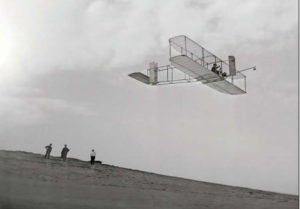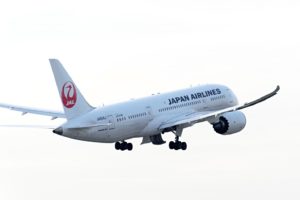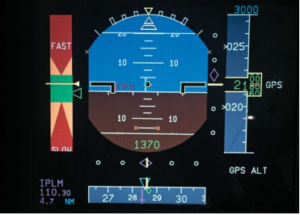How fast is a commercial airliner? Captain Lim Khoy Hing explains this and other issues related to airspeed.


First successful flight by the Wright Brothers took 12 seconds.
Just little over a century ago, the first successful flight was launched by the Wright brothers, and it took all of 12 seconds. The engine powered manned plane travelled at a speed of 26 knots for a distance of 120 feet – shorter than the wingspan of a Boeing 787! The Wright brothers’ plane relied on the shape of its wings, speed of its forward motion, and Bernoulli’s principle in order to make that short, historic flight. According to the Bernoulli theory, air flowing across the top of a curved cross-section of the wing causes air pressure under the wing to be higher, thus creating lift to raise the plane off the ground.
Today, commercial airliners equipped with jet engines have been able to push travelling speed well beyond the imagination of the early pilots. With this incredible speed, travelling from England to Australia, which used to take months on ocean-going vessels now takes less than a day on a plane.

Image source: Travel 3Sixty
Flying non-stop
The first flight stayed airborne for only 12 seconds. Today, however, commercial airlines compete with each other to launch the longest non-stop flights for passengers’ comfort and convenience. On March 24, 2018, a Qantas Boeing 787 Dreamliner left Perth, Australia, for a non-stop flight to London, which took just over 17 hours. It was the first commercial airliner to fly 9,010 nautical miles without the need to refuel and the first non-stop flight between Australia and Europe. Still, Qantas is not the only airline that flies more than 9,000 nautical miles non-stop.
In 2017, Qatar Airways launched its Auckland to Doha service – a 17.5 hour journey that covers a distance of 9,032 nautical miles. The current longest non-stop flight title holder is Singapore Airlines, which reclaimed its former record in October last year with its 19-hour Singapore to Newark (New York) route.
Cruising speeds
The average cruising speed for a commercial airliner is around 480 knots (550 mph) or about eight nautical miles per minute. Airliners are designed to perform best below the speed of sound (667 knots or 767 mph at 20 degrees Celsius). In theory, they could potentially fly at supersonic speeds but that would burn too much fuel to be profitable.
There are two other speeds a pilot must be vigilant about. Pilots should never fly below the stalling speed or cruise above the maximum designed speed. The stalling speed is critical and can vary according to the weight of the aircraft. This speed is around 100 to 120 knots and anything below this range can make an aircraft unflyable.
Speed is measured by pitot tubes in the aircraft. This tube system senses differences in static and dynamic pressure as the plane moves forward against the air flow. Information on both stalling and maximum designed speed is shown in the cockpit instrument display as the airspeed, which is essential to pilots.

Airbus Back-Up Speed Scale (BUSS) used when airspeed fails
Of wasps & pitot tubes
Any issue that may lead to a possible instrument malfunction must be dealt with swiftly. On November 21, 2013, an aircraft was forced to make an emergency landing shortly after take-off from Australia’s Brisbane Airport. An investigation by the Australian Transport Safety Bureau (ATSB) identified the cause – wasps had built a mud nest on a pitot tube while the plane was parked at the terminal (apparently, it only took two hours for the wasps to build their nest). Wasp inspections are now part of the airport’s wildlife management plan and, to prevent recurrences, airlines that transit in Brisbane Airport are required to use pitot tube covers, regardless of how much time the aircraft spends on ground.
This incident was definitely not the first time that wasps were blamed for a pitot tube malfunction. However, in July last year, an aircraft was forced to turn back to Brisbane Airport after take-off due to airspeed indication failure. According to news reports, this time the malfunction was not caused by a wasp nest but by the failure to remove pitot tube covers!
New technology to the rescue
Today, Airbus aircraft use a system known as Back-Up Speed Scale (BUSS), which reduces the risks of issues arising from failed detection of airspeed. This enables the pilot to land safely by following the green marking on the flight display in the cockpit. It would not allow the pilot to continue on the journey until the problem is rectified. My colleagues and I, as simulator instructors, are playing our parts by honing this skill and guiding pilots to land a plane safely using the BUSS system in the event of airspeed failure. With that, I wish you all safe flying always.
Posted: 10.02.19